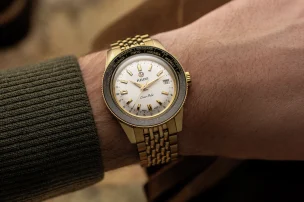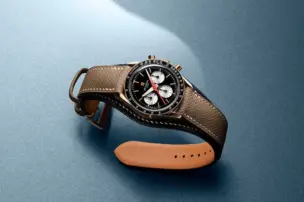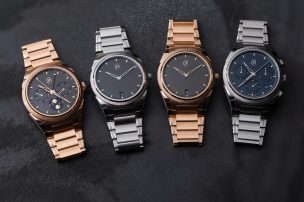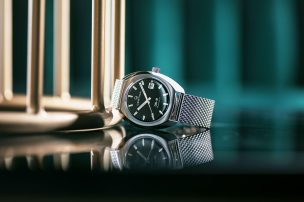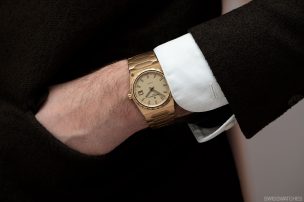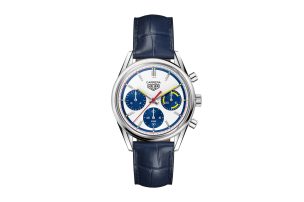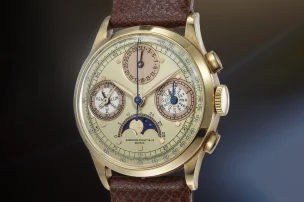
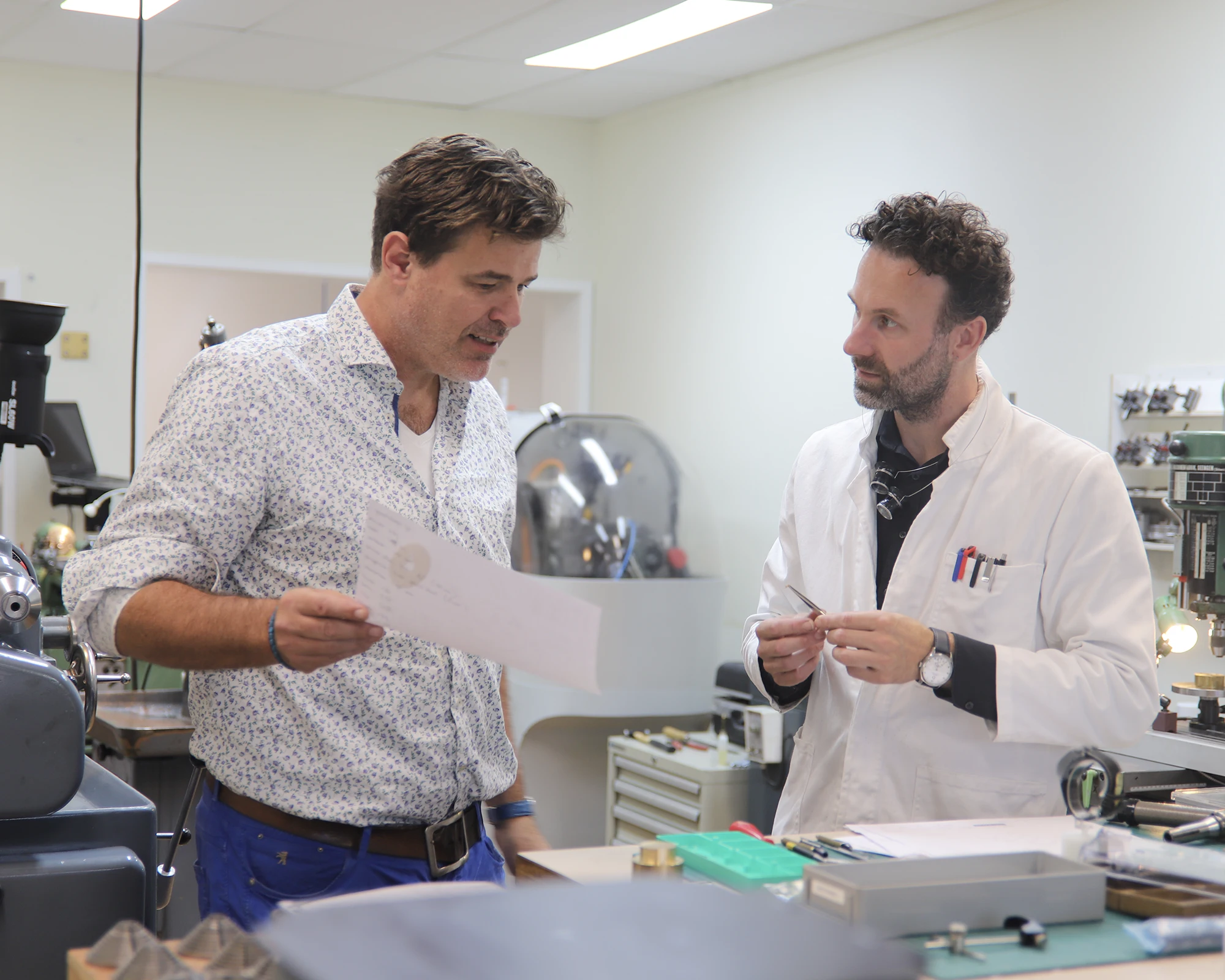
Collector’s Choice: @jumphourking Ruud van Rijn Talks Jump Hour Watches
Let’s start with the most important question. What is it about the jump hour mechanism that so enamours you?
When I started collecting watches in the 1990s I liked ‘odd’ watches, mainly from the 1970s. That meant alarm watches, strangely shaped cases, 24-hour dials, world time – anything out of the ordinary. I am not into ‘normal’ round watches with round dials with just hours, minutes and seconds hands. As time passed, I began to focus on one specialty: the jump hour. These jump hour watches often had strangely shaped cases, and looked the most different from your ‘normal’ watch. Furthermore, nobody else had them. Another important factor was that jump hour watches were not expensive at the time I started collecting. Nowadays, that has unfortunately changed. Once I started collecting jump hours, I got the classic collector fever: I had to collect them all. Now I have hundreds of jump hour watches and almost every type and calibre ever made, except for the very expensive ones (Patek, AP, Vacheron etc).
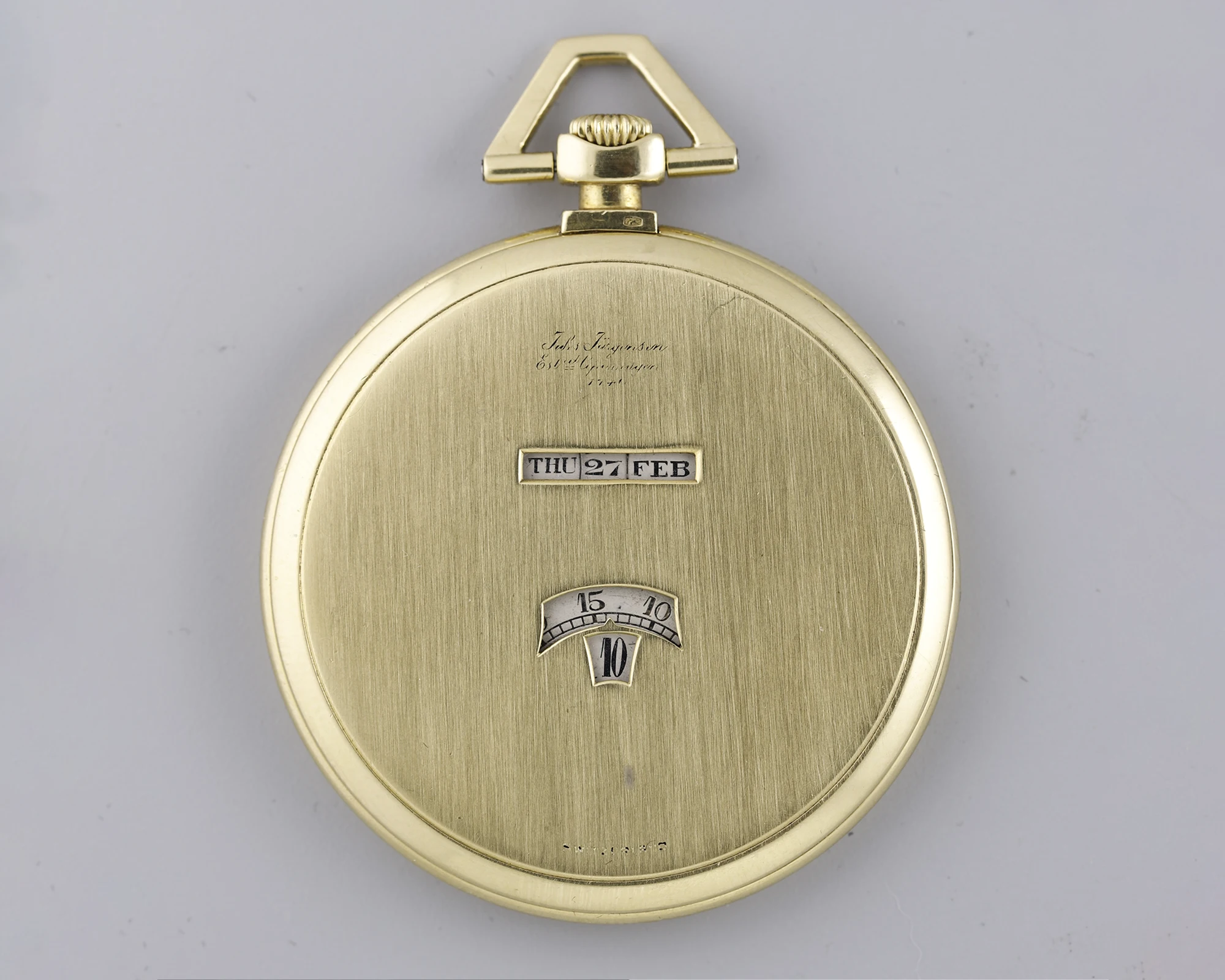
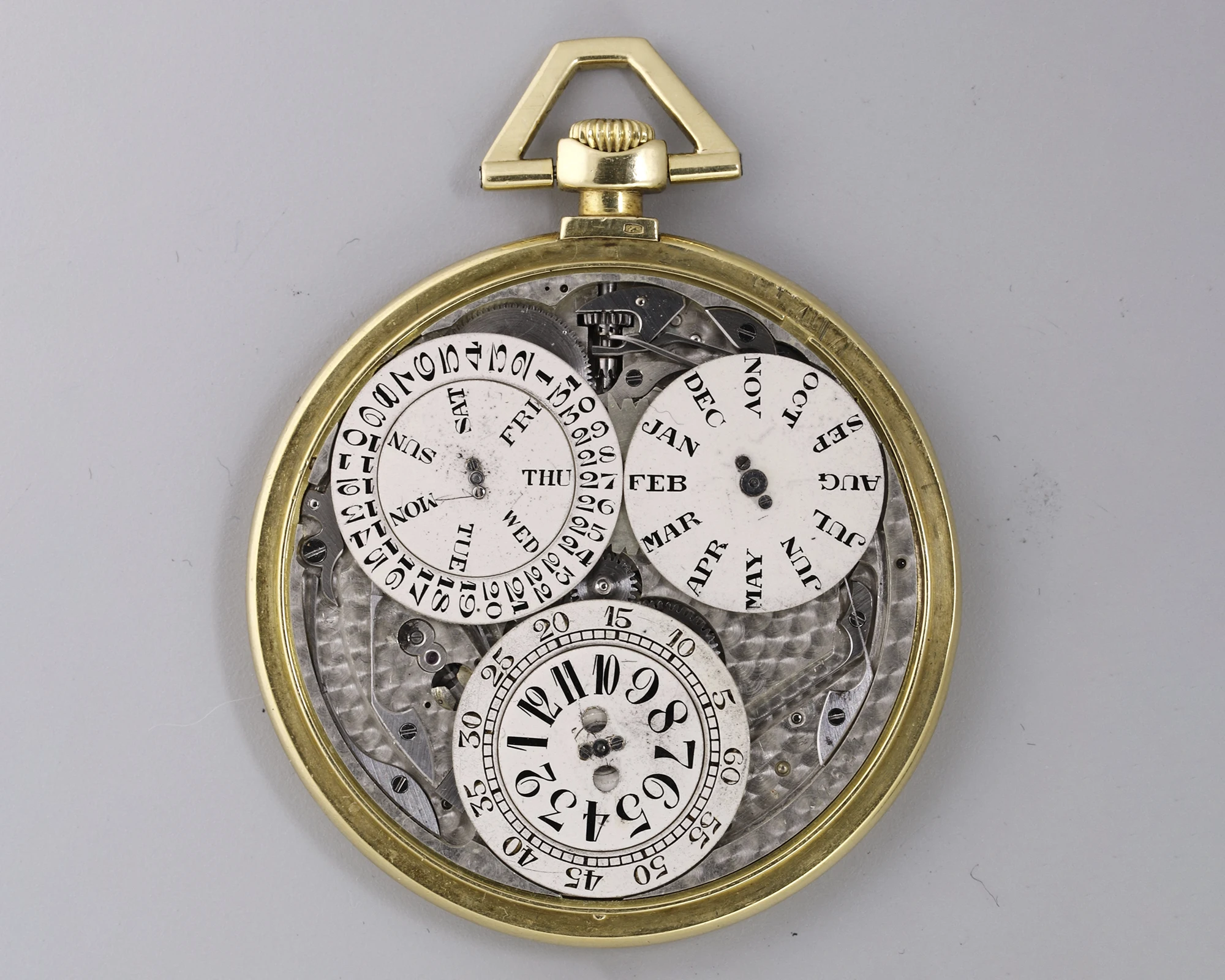
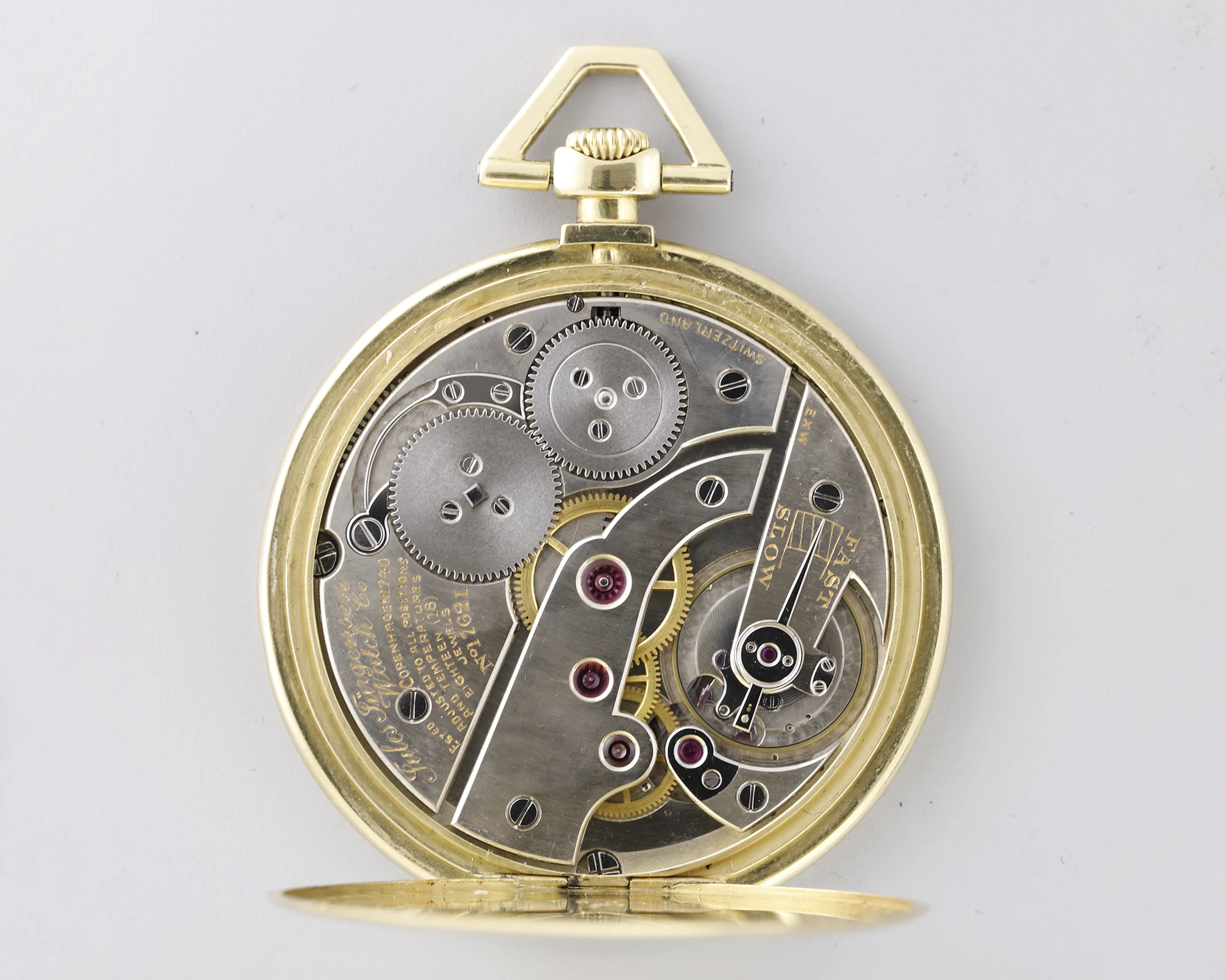
1928 Robert Cart Jules Jurgensen
You have some remarkable personal projects in the mix. You are launching your own book, but perhaps even more importantly, you are creating your very own watch, the deRhenum1. How did you land on not only creating your own watch, but also why did opt for these specific qualities (e.g. jump hour x chronograph) and the rather sporty design?
Three years ago, I started taking watchmaker courses at the Zadkine Vocational School for Watchmaking in Schoonhoven, in the Netherlands. Together with one of the teachers, Gertjan Westerbeke, we decided to design a jump hour chronograph. We had a few delays, but the prototype will be finished by January 2025. I wanted to design a jump hour that did not exist yet: day, date, chrono seconds-minutes-hours and digital hours and minutes for the time.
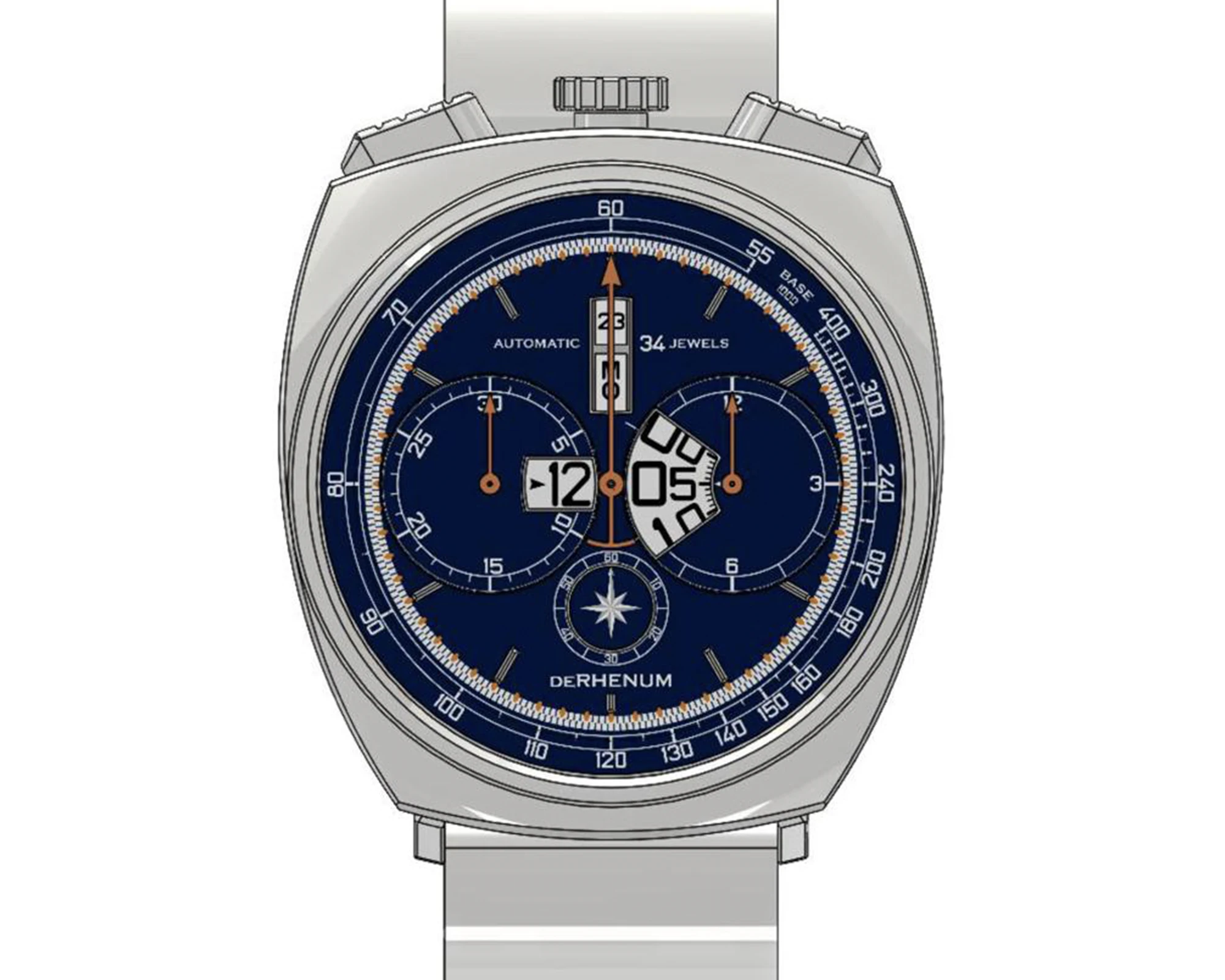
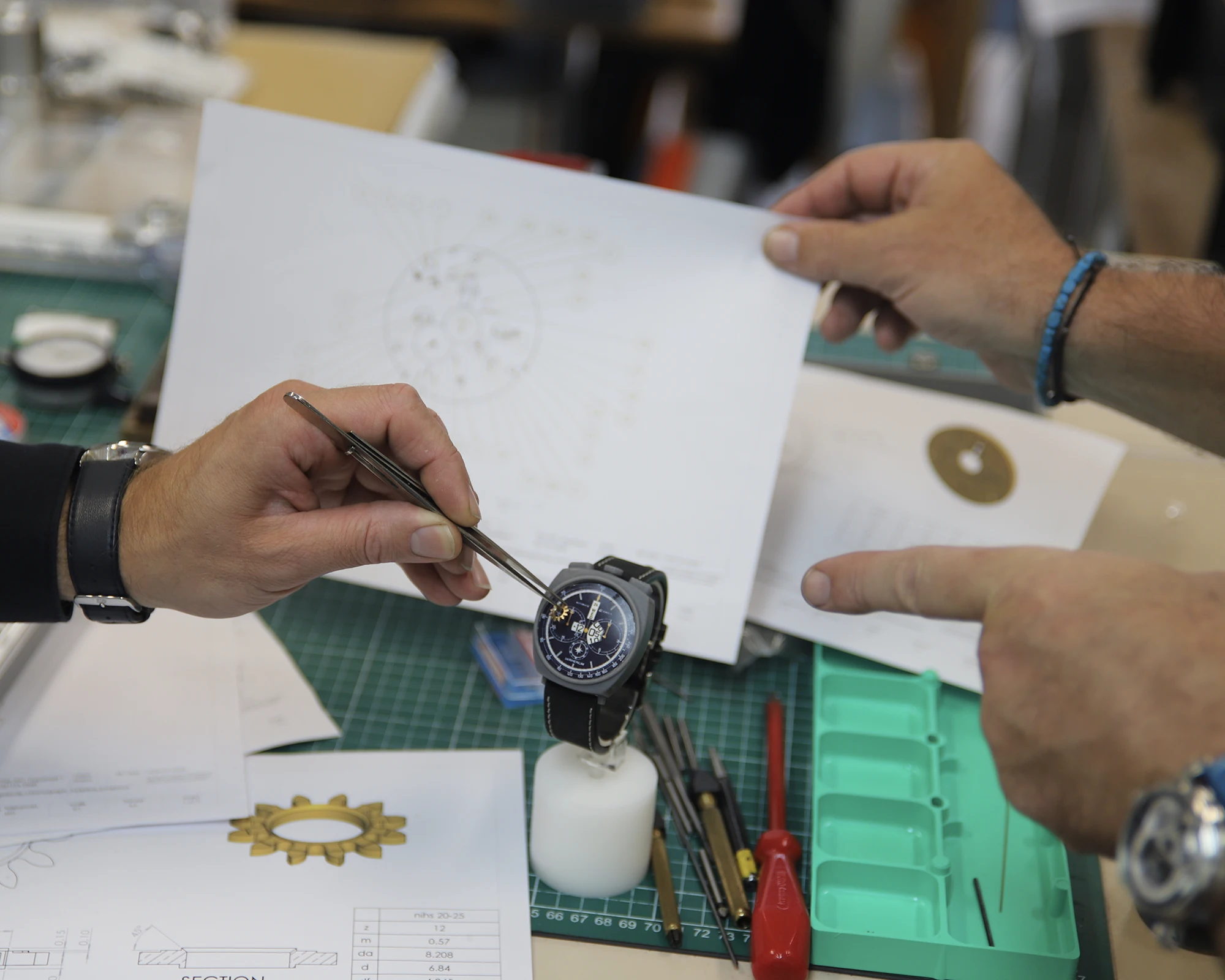
Ruud van Rijn’s own creation, the deRhenum Bullhead jump hour chronograph
However, since it took a lot of time to design and build this chrono jump hour watch, I have designed a watch that was simpler to design and build in the meantime: the Space Jump Hour. This watch will be ready in November 2024. It is equipped with a NOS automatic calibre, and I have 25 pieces available.
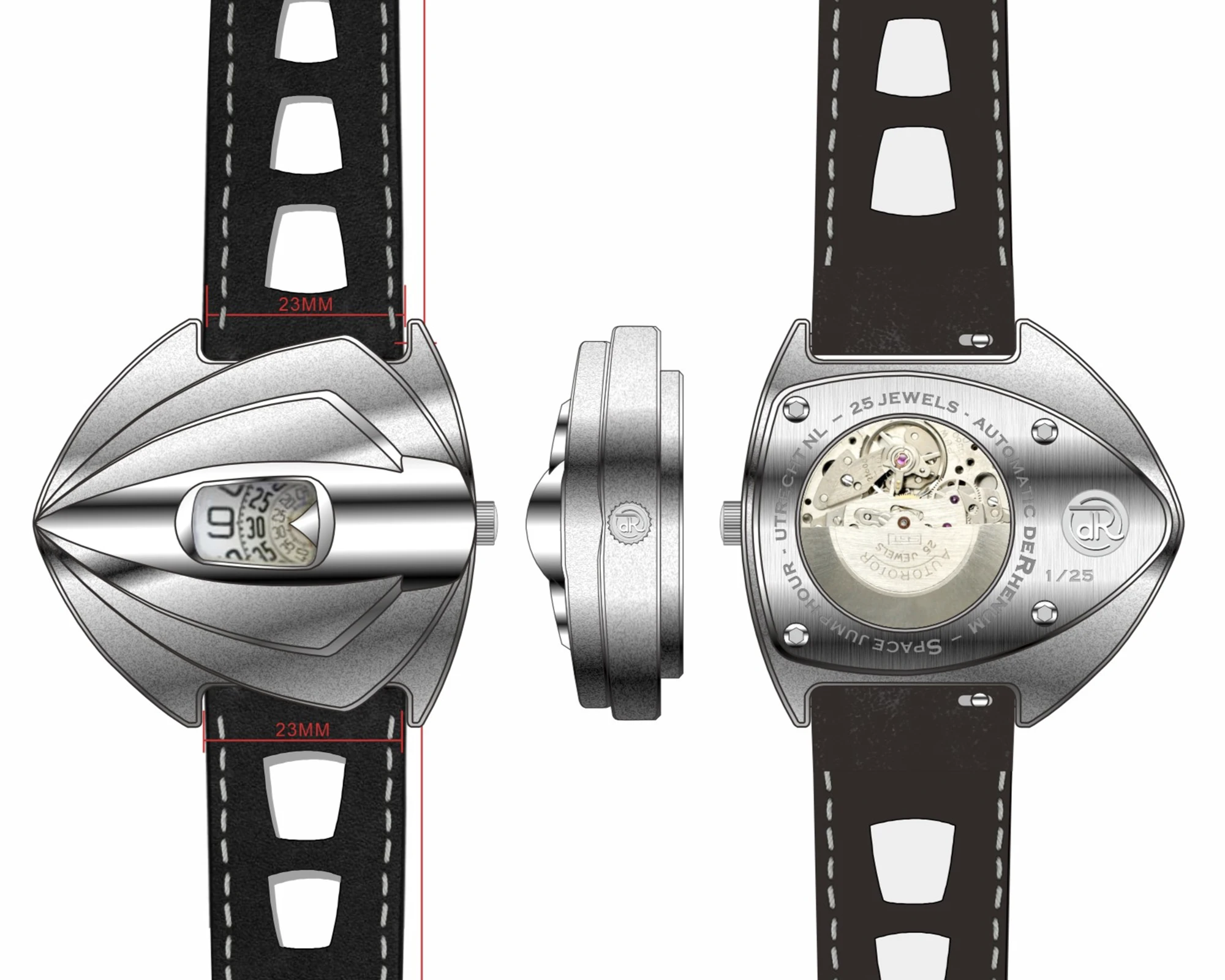
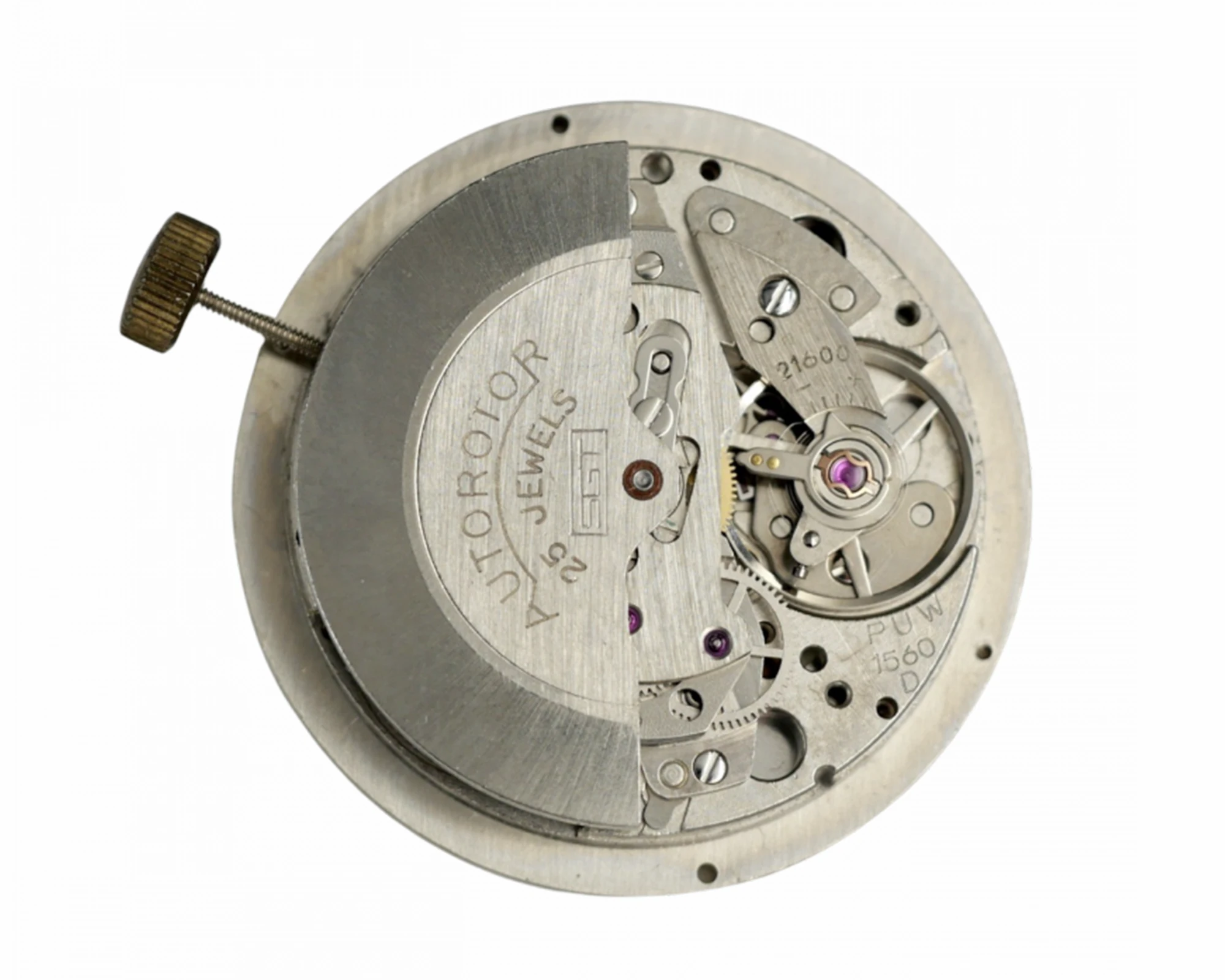
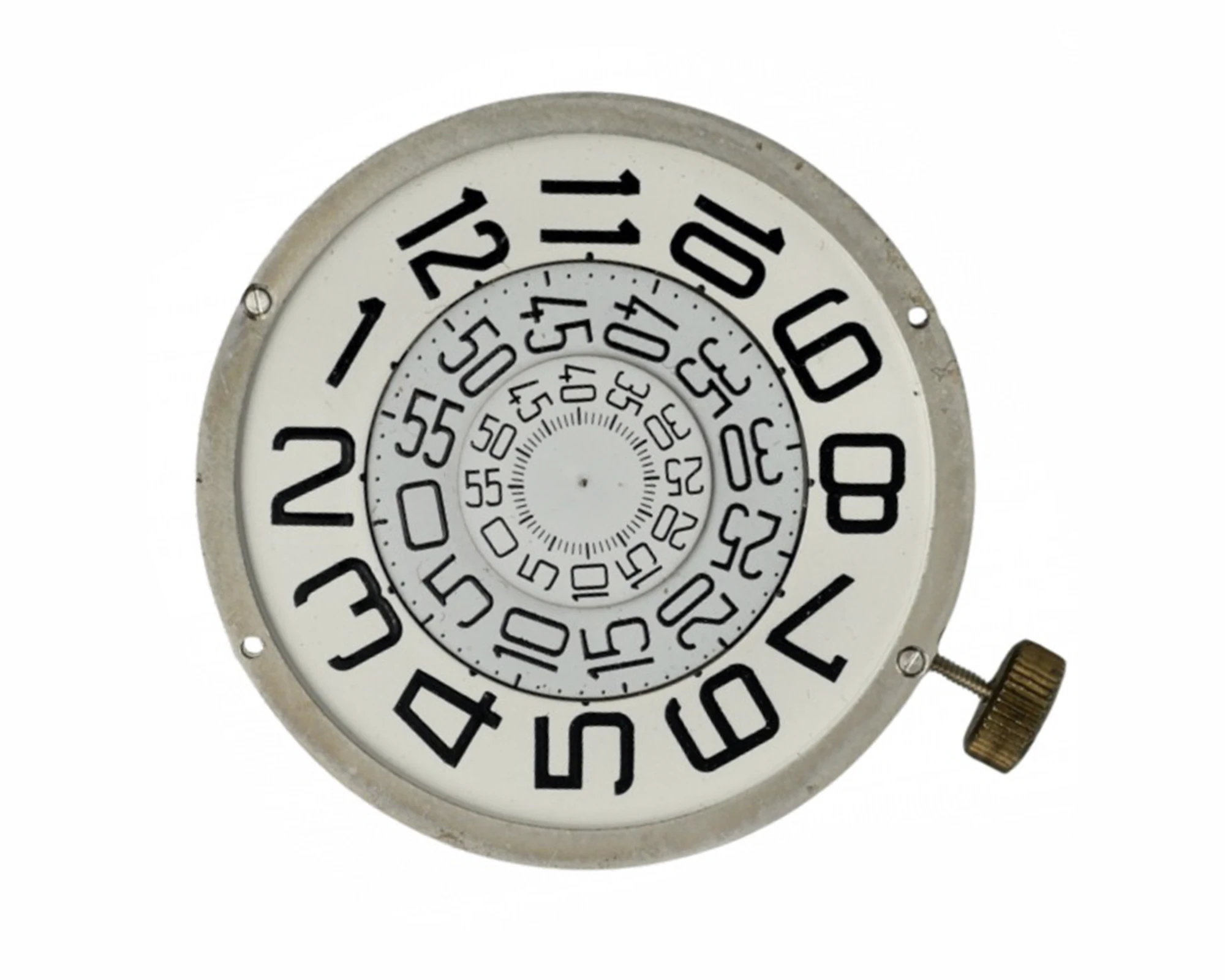
Another creation by Ruud van Rijn: the deRhenum Space Jump Hour
Let’s move onto the book that you’re planning to launch this year, ‘Jump Hour Designs’. Jump hour movements are unfortunately not as celebrated as various other mechanisms in watchmaking – so how do you plan to draw attention to them through the publication of this book?
Jump hour watches are a niche. But still every big brand has at least one jump hour model: AP, Patek, Vacheron Constantin, even Rolex had jump hours in the 1930s. Given that I get a lot of nice comments on my Instagram, I think a book about jump hours is missing in horological world! Just like there is a book about alarm watches or military watches, there is a market for a book about jump hour watches as well. Most serious watch collectors own at least one jump hour.
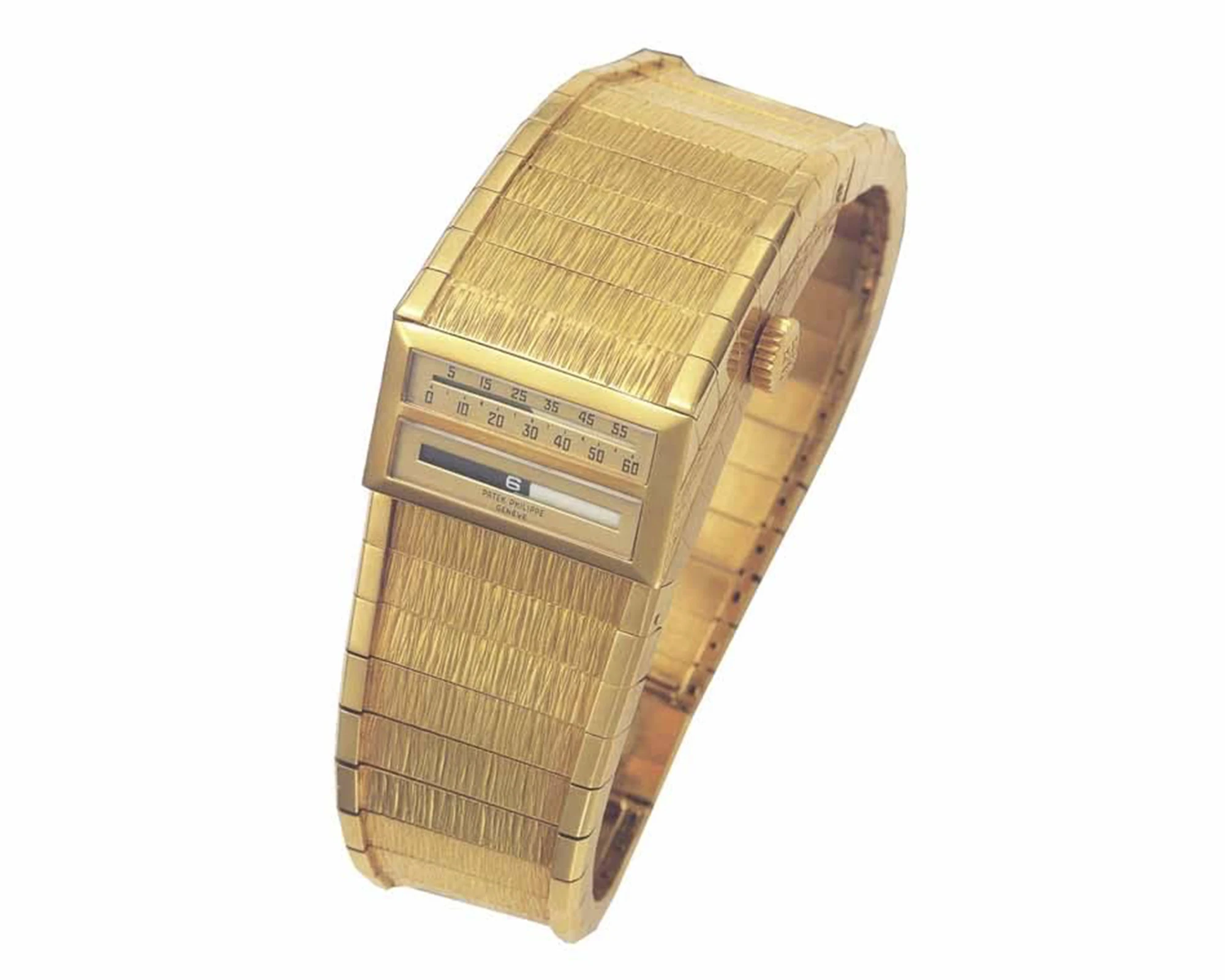
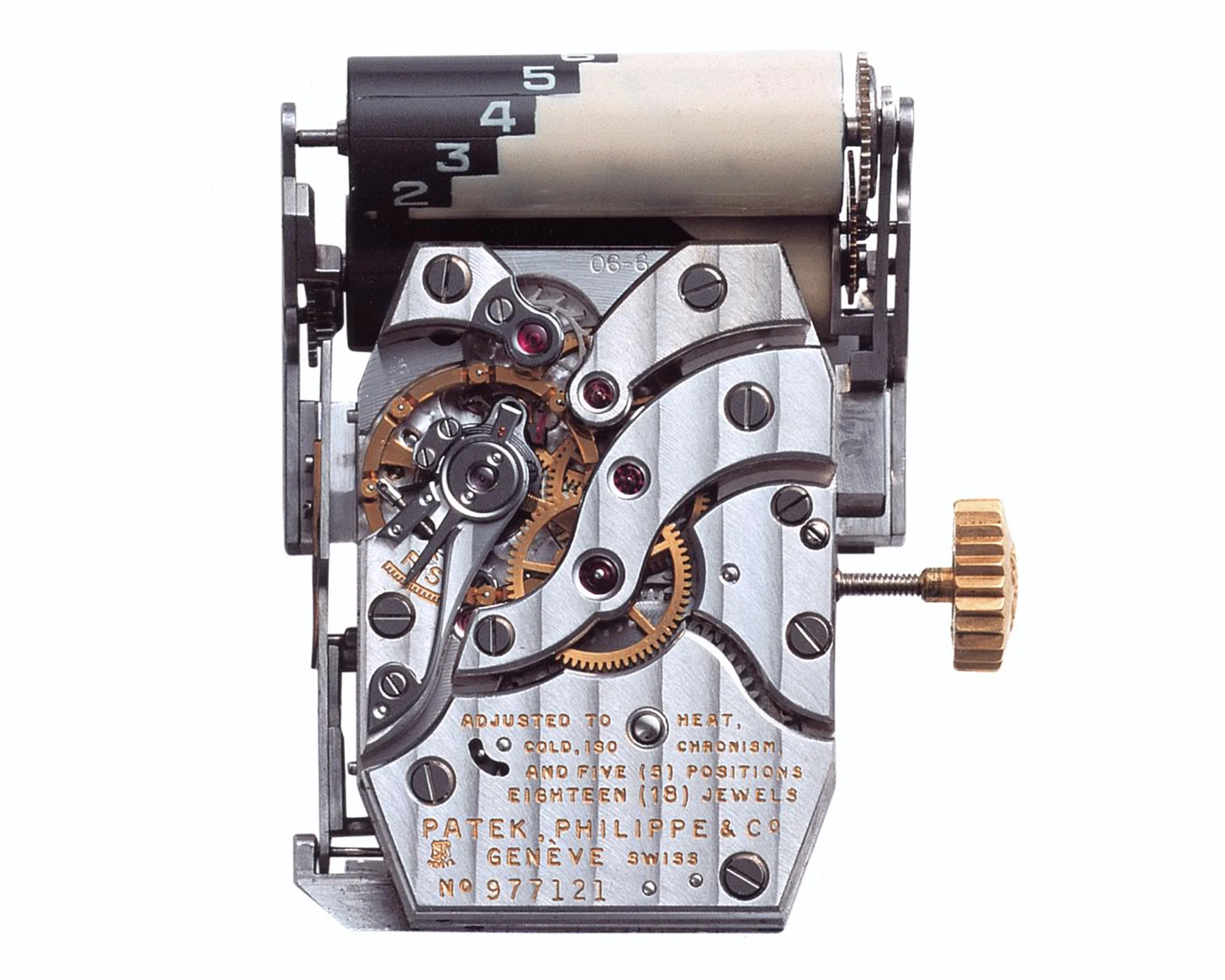
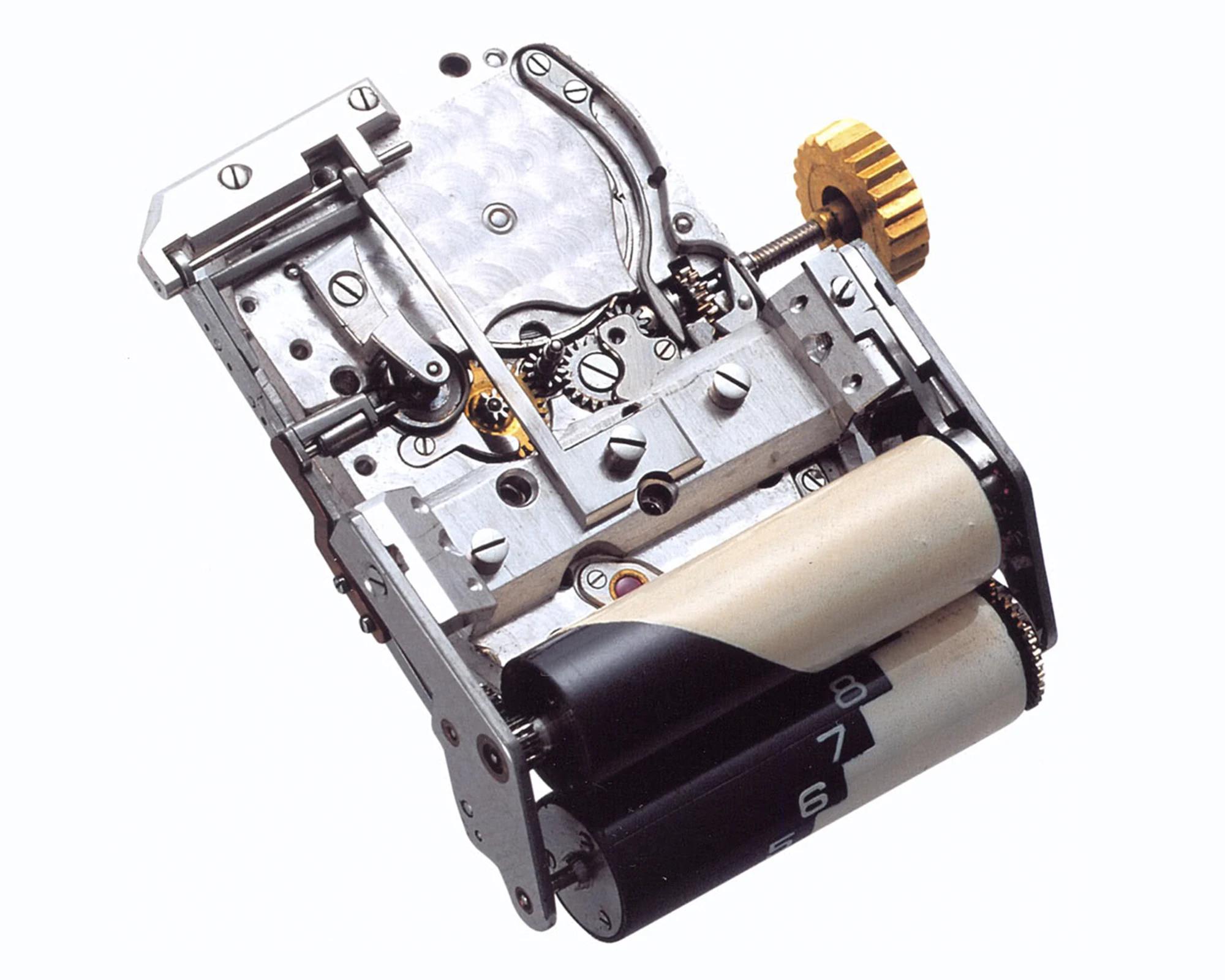
Patek Philippe jump hour, 1957
On that note, given the relative lack of visibility jump hour watches receive, how do you go about finding new additions for your collection? For example, online, via dealers, or through contacts?
Every week, on Monday morning, I scour the internet. I have a set of auction websites I visit, comprising about 25 to 30 sites. It’s always the same routine. My most important sources are: eBay USA, eBay Germany, eBay France, Lot-tissimo, Invaluable, Saleroom and Kleinanzeigen. In addition to that, I visit the Rikketik watch fair in Houten, which is close to my home town in Utrecht, the Netherlands. I can go there by bicycle, and it is held four times per year. I also used to visit other watch fairs in Germany, France, and Switzerland in the 1990s and 2000s, but since the internet took off, that is no longer necessary. Those fairs usually only had two or three jump hour watches of models I already possessed anyhow. The supply on the internet is so much larger. Having collected for 25 years, I have been able to build a nice collection of all jump hour models that exist.
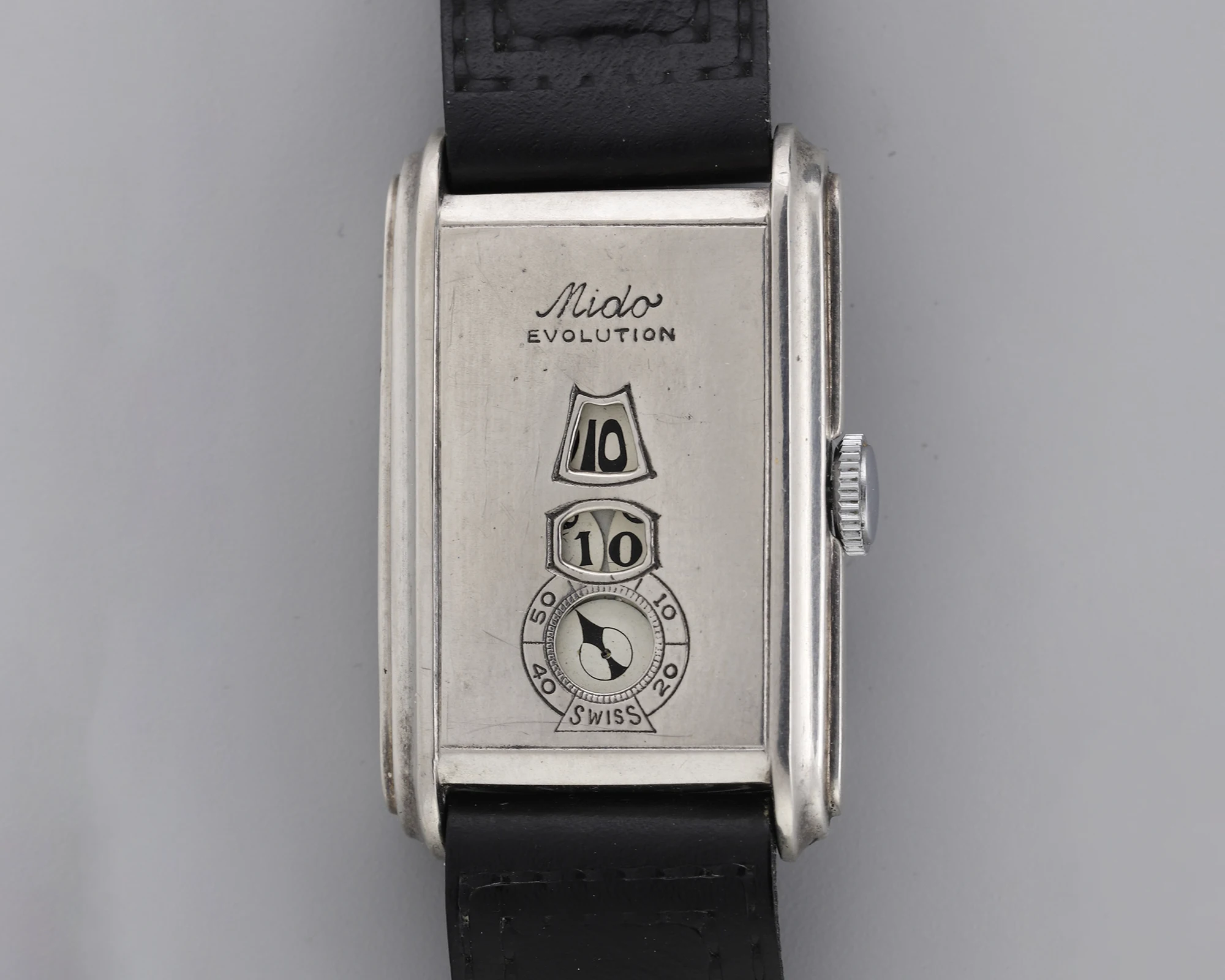
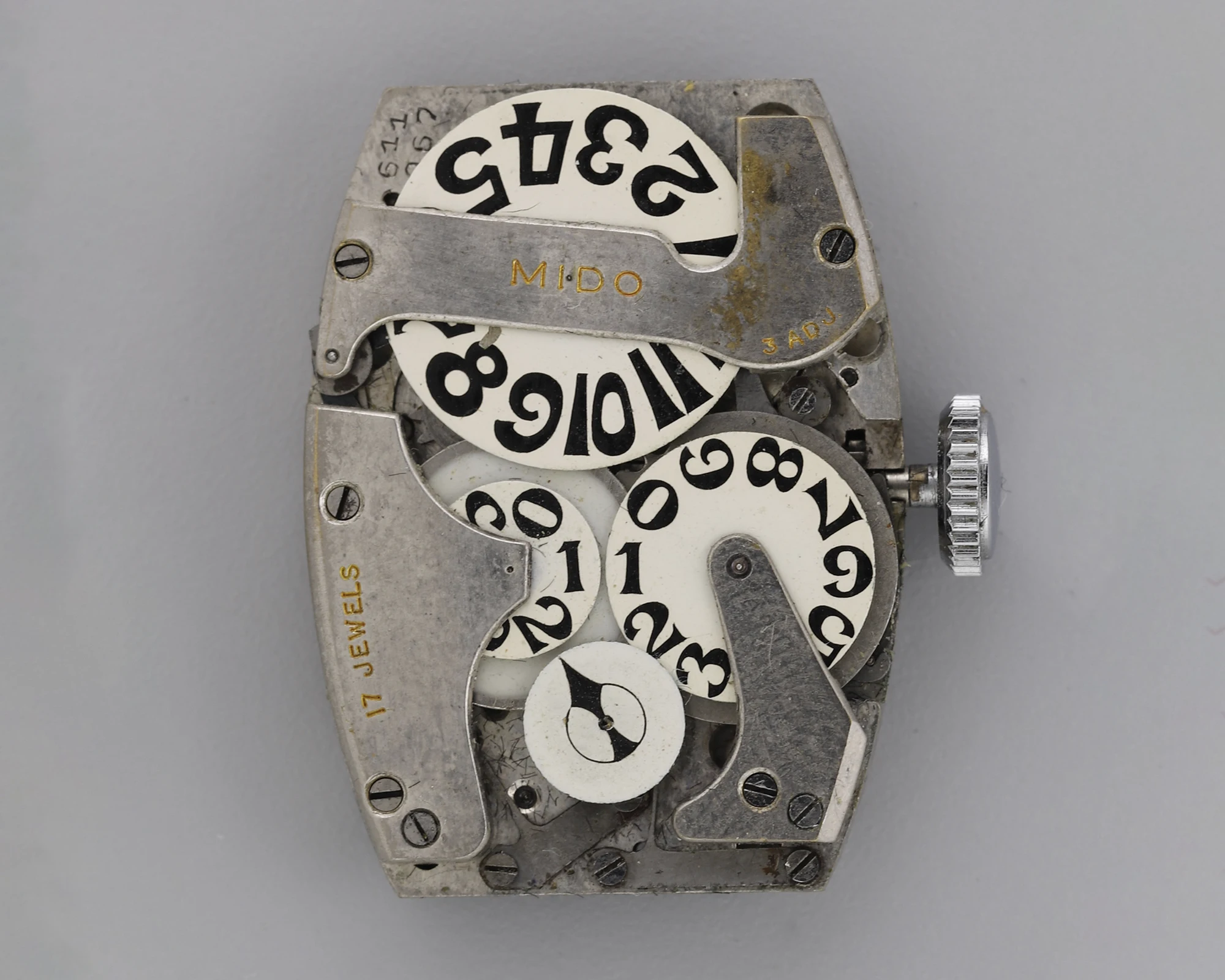
MIDO Evolution jump hour, 1933
What is the difference between owning a vintage and modern-day jump hour watch?
I like both vintage and modern day jump hour watches, but modern day jump hour watches are so much more reliable. They run well and tell you the exact time. Vintage jump hour watches usually need maintenance. In particular, the fashion jump hour watches from the 1970s have terrible movements, 1 jewel pin levers. They had to compete with quartz watches. Also, jump hours from the past are quite small. Since I have a large wrist, modern-day watches fit me better.
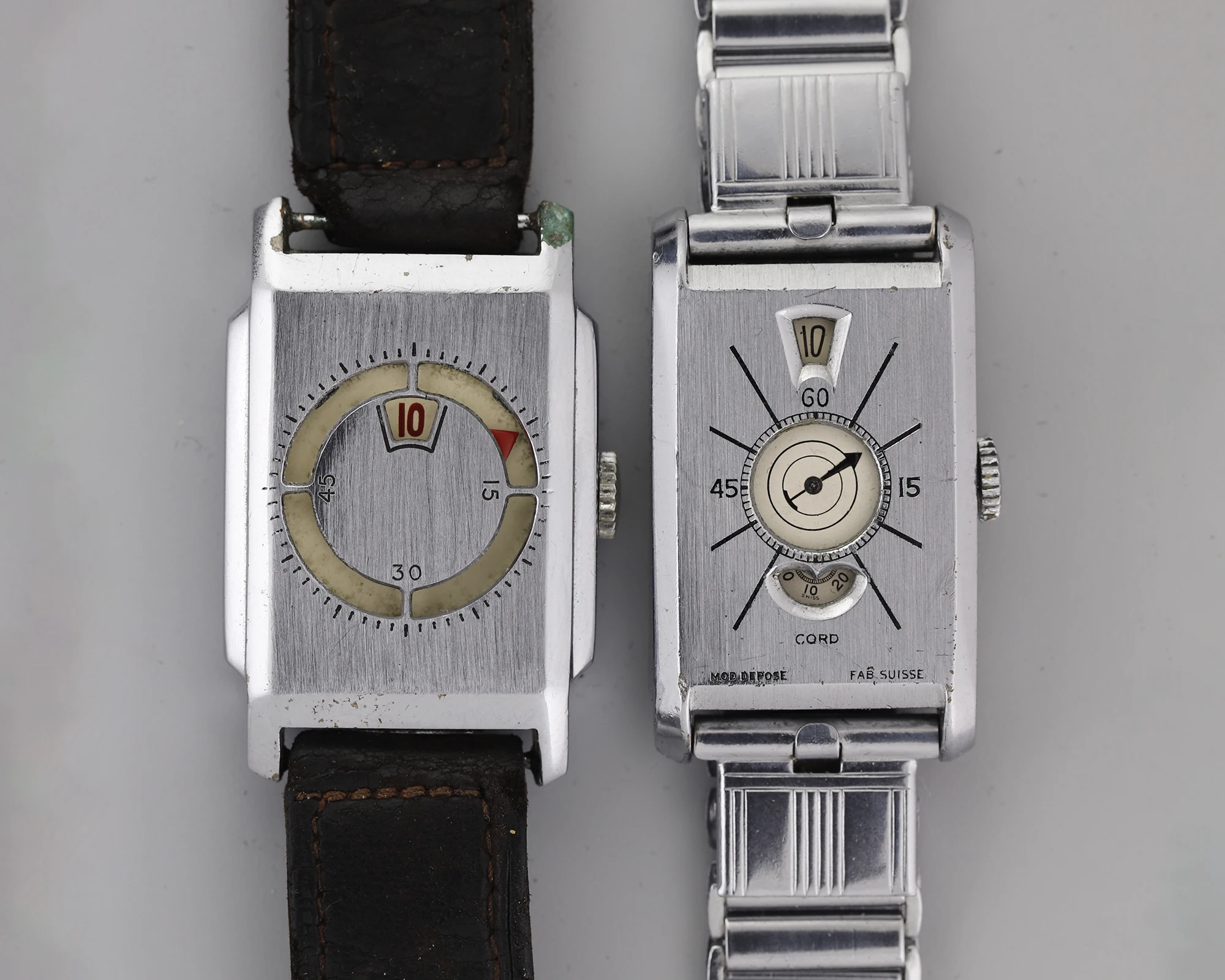
1932 Doxa and Cord jump hour watches
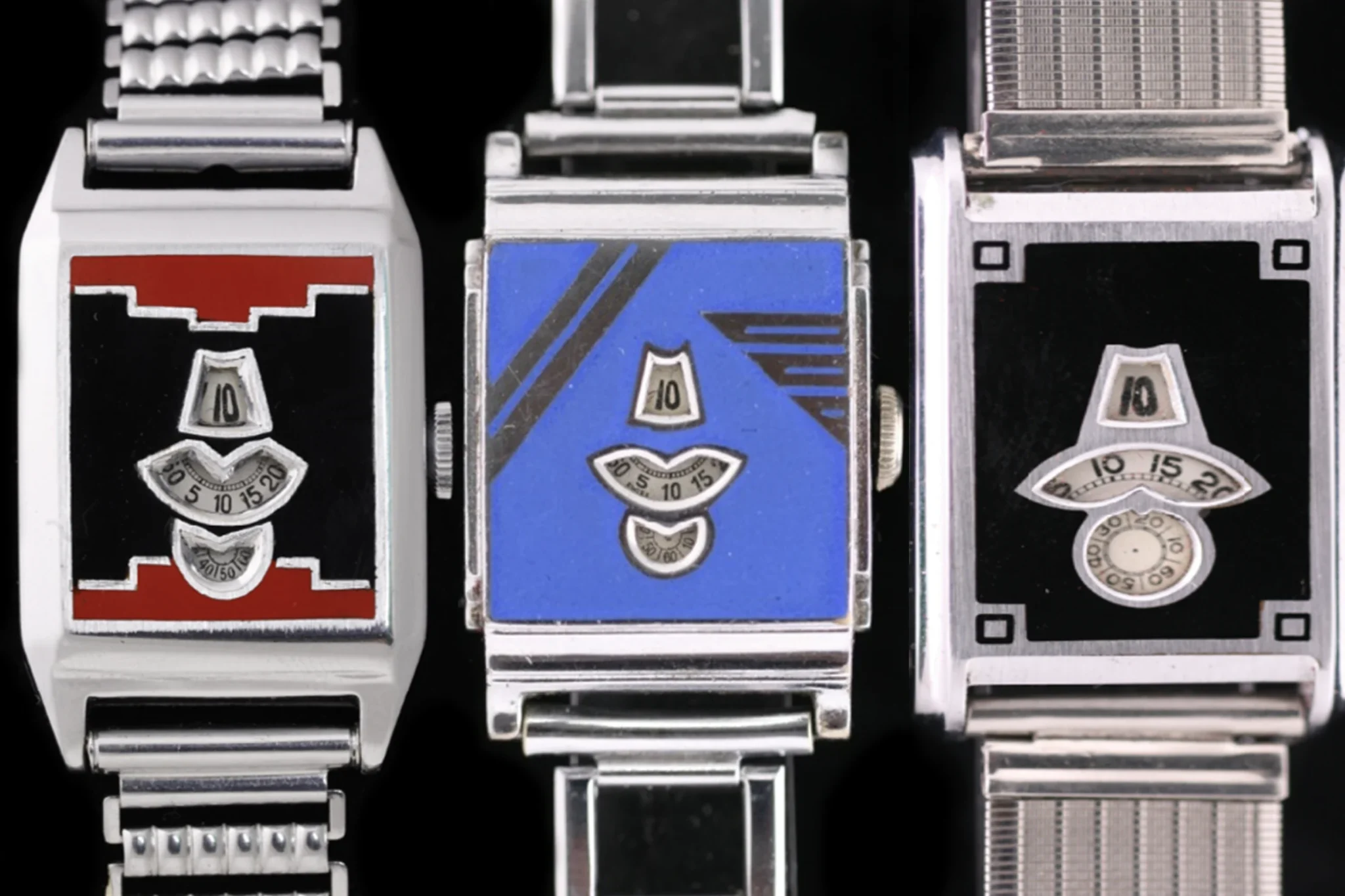
Lacquered dial jump hour watches from 1932
How many jump hour watches do you have in your collection? And which non-jump hour watches do you own?
I have hundreds of jump hour watches. My oldest one is from the late 17th century. I also have a few alarm watches, chronographs, triple date watches, 24-hour dial watches, watches with odd cases, watches with art on the dials, bullheads and moonphase watches.
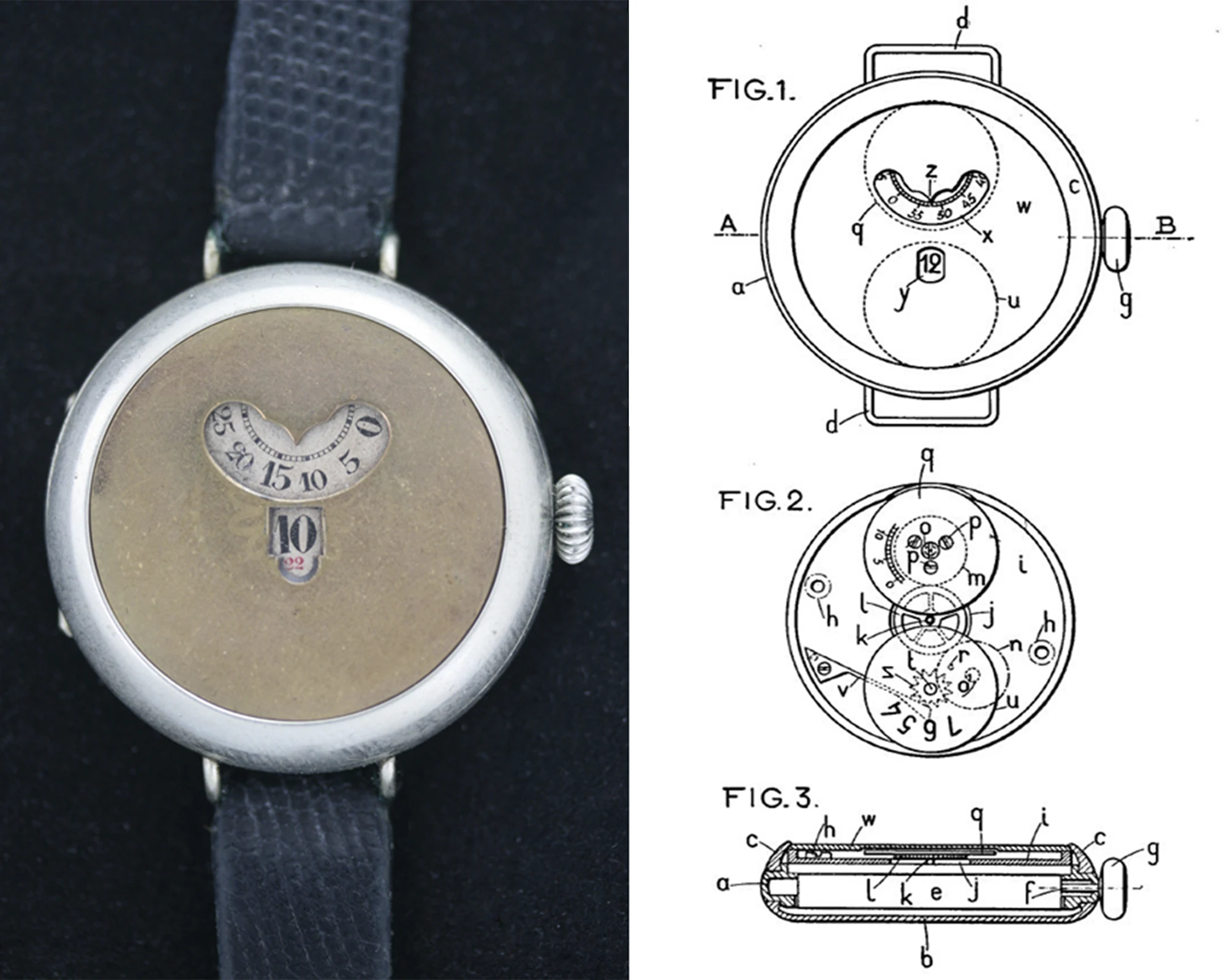
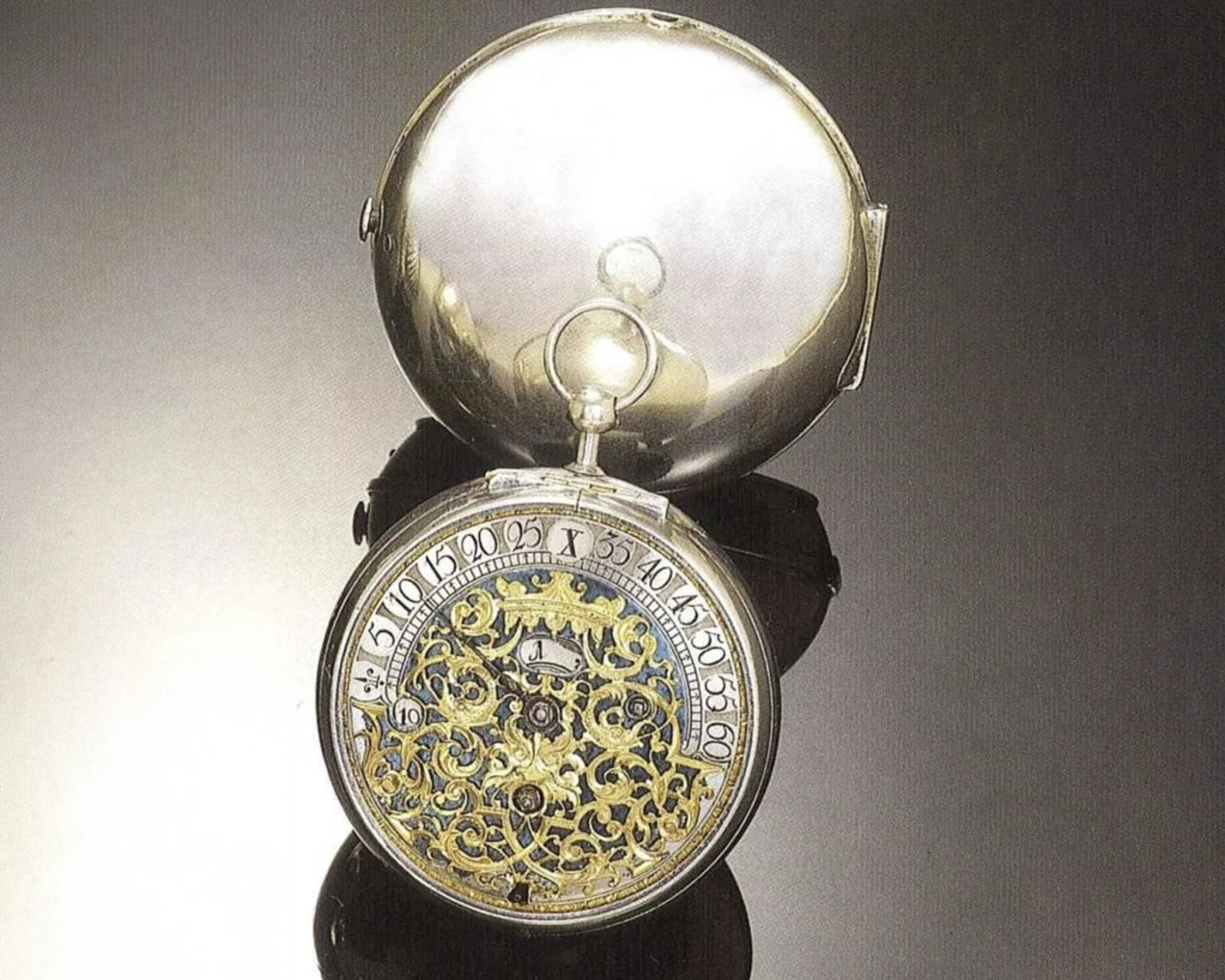
The world’s first jump hour wristwatch, Alfred Spori (1915), and an Eckhart
jump hour pocket watch from the 1700s.
What is @jumphourking’s daily watch, and what does his typical day look like?
My daily watch now is the prototype DeRhenum Space Jump Hour. As mentioned, I will have 25 pieces for sale in November, and it went on pre-sale this month. As for my typical day: I am a freelance consultant in renewable energy for two and a half days a week. The rest of the time I spend on repairing, collecting and designing jump hour watches.
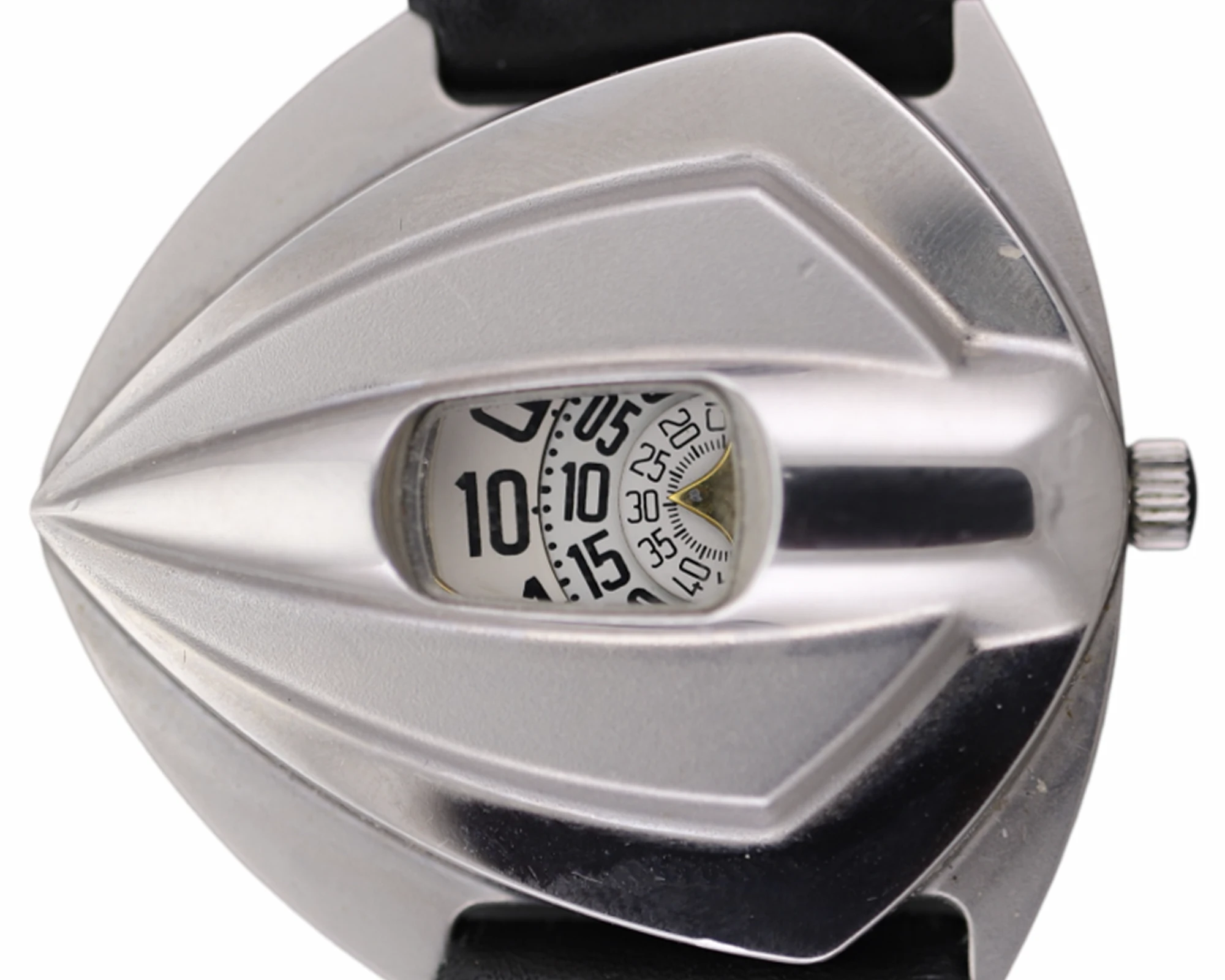
How did you come to be a part of the watchmaking world – and how did you become involved in it from the Netherlands, especially before online watch enthusiast communities became the norm?
I have collected watches since I was a kid. I remember when I was 18 I had about ten to 12 watches. When they stopped ticking, I started to open them up and tried to repair them. I ruined a few watches that way, but I had a steep learning curve. I was not aware that the Netherlands was not a typical watch-collector country. I liked watches, so I collected them. Nowadays, there are many watch enthusiasts in the Netherlands.
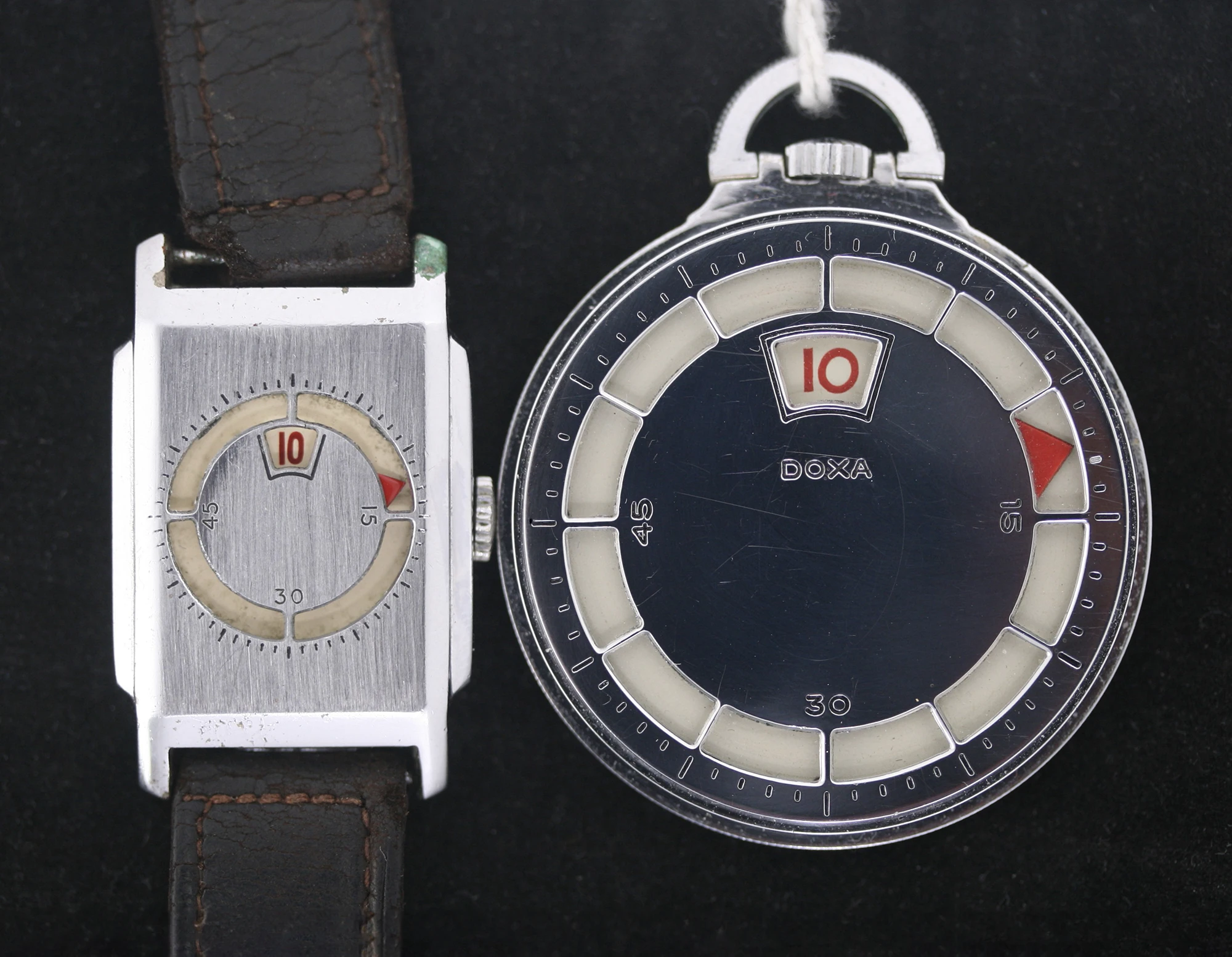
Doxa jump hour models from the 1930s
The million-dollar question – which watch brand (let’s say still in existence today) do you deem to create the most impressive jump hour watches, and why?
That would have to be be F.P.Journe. The Vagabondage III is the best jump hour on the market these days, and it has jumping seconds. I also like the Porsche Design Eterna Porsche Indicator, with mechanical digital chronograph.
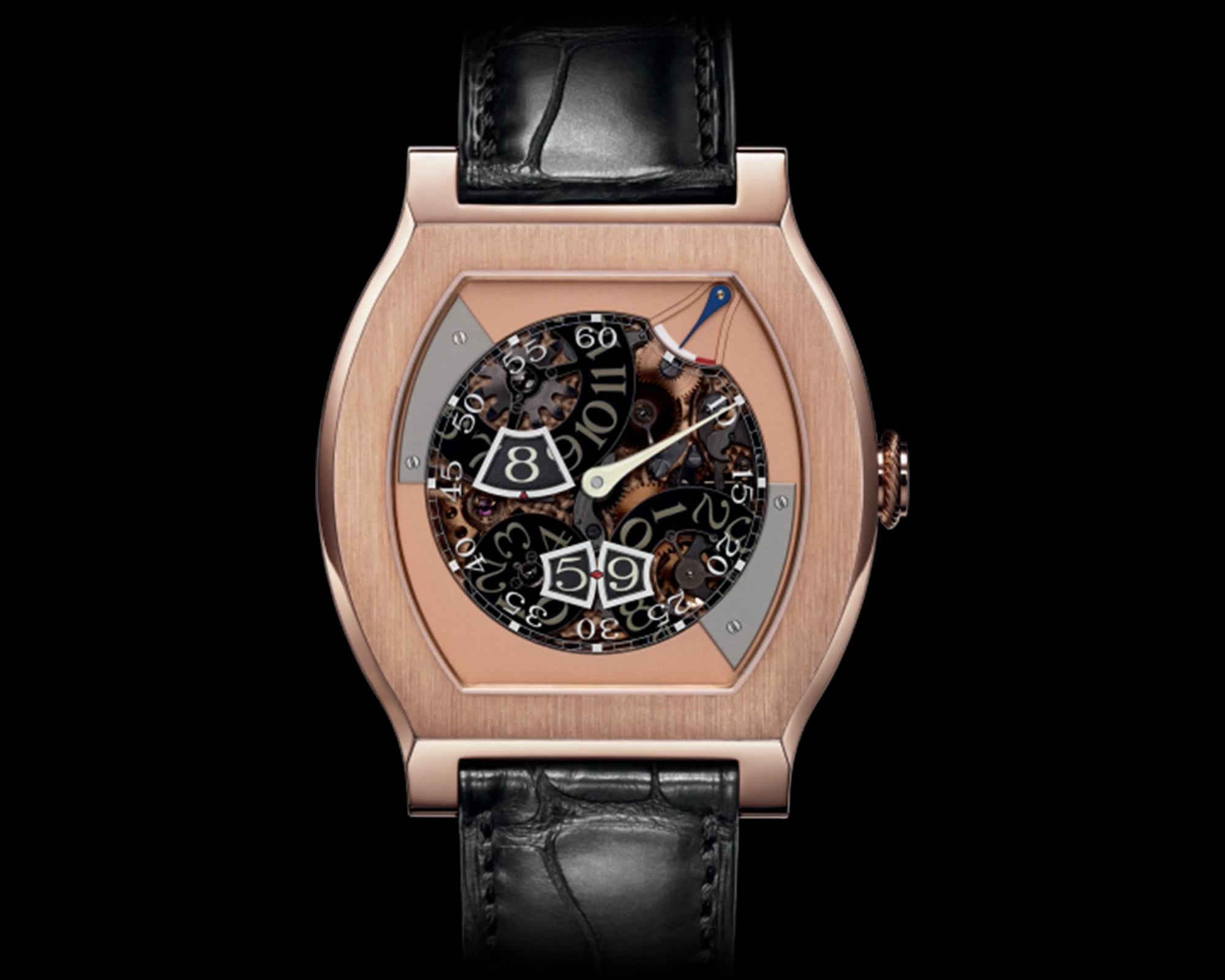
F.P.Journe Vagabondage III
What is your favourite aspect of the watch collector community?
I like watch collectors because they usually are very ‘normal’ men (unfortunately there are still not too many women – too bad). No posh suits, no slick talks, very rational.

Ruud van Rijn and the deRhenum team in Hong Kong
What would be your dream jump hour watch to get hold of for your collection?
There are a few. One would have to be the Eberhard jump hour chronograph with Hahn Landeron movement (there’s one housed in the Eberhard museum). Another would be the Campani clock from the 17th century (Urwerk Geneva has one). Finally, another dream would be the De Bethune dream watch jump hour.
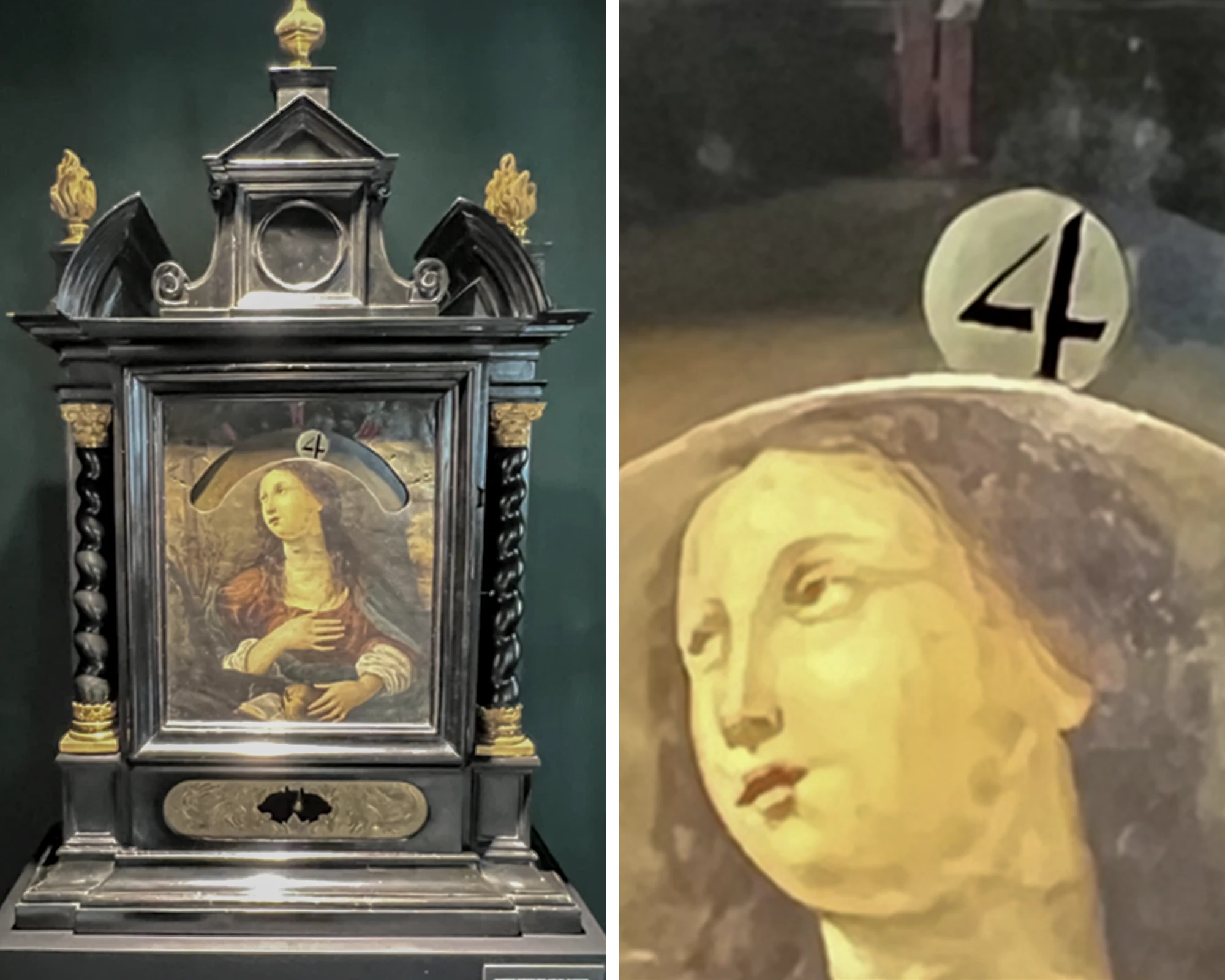
One of the 17th century night clocks made by the Campani brothers

Three respective Movado jump hour watches from the 1930s
